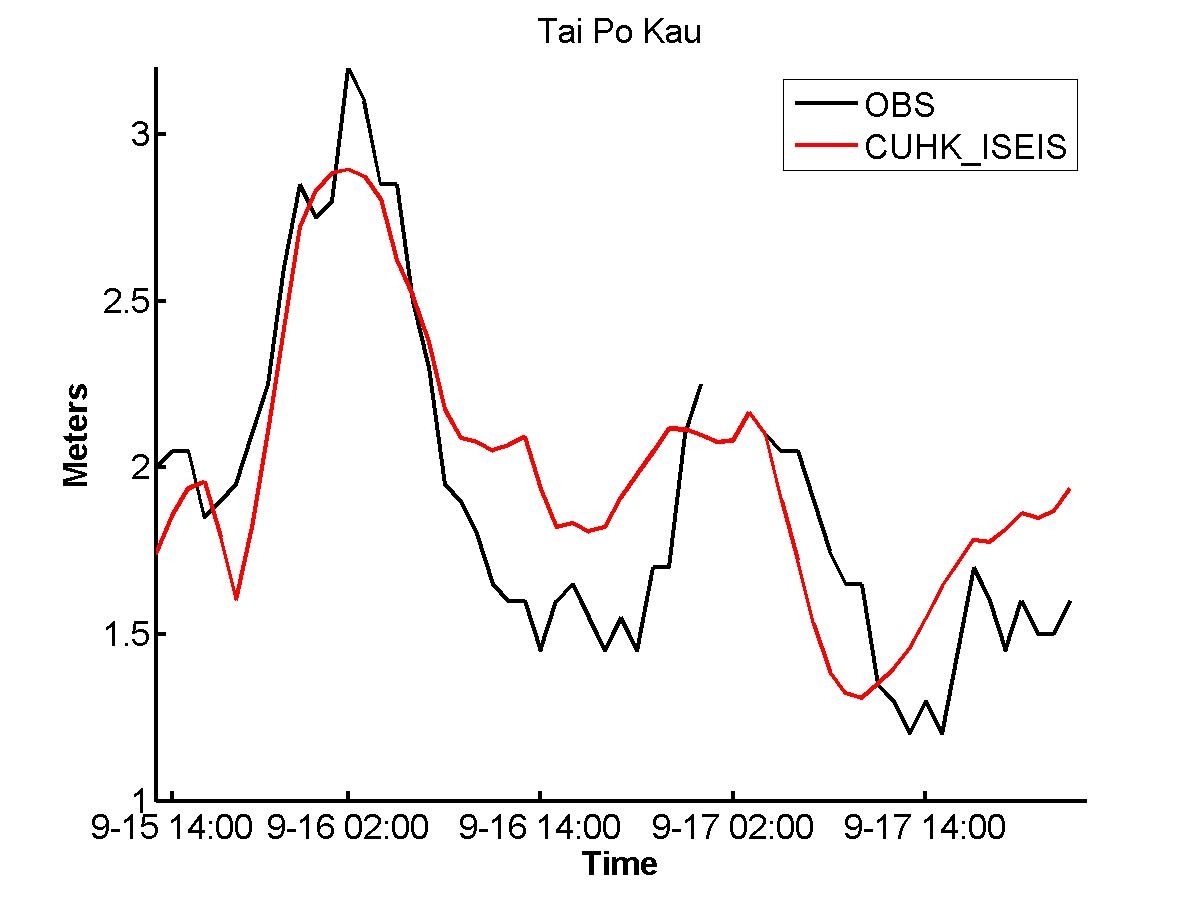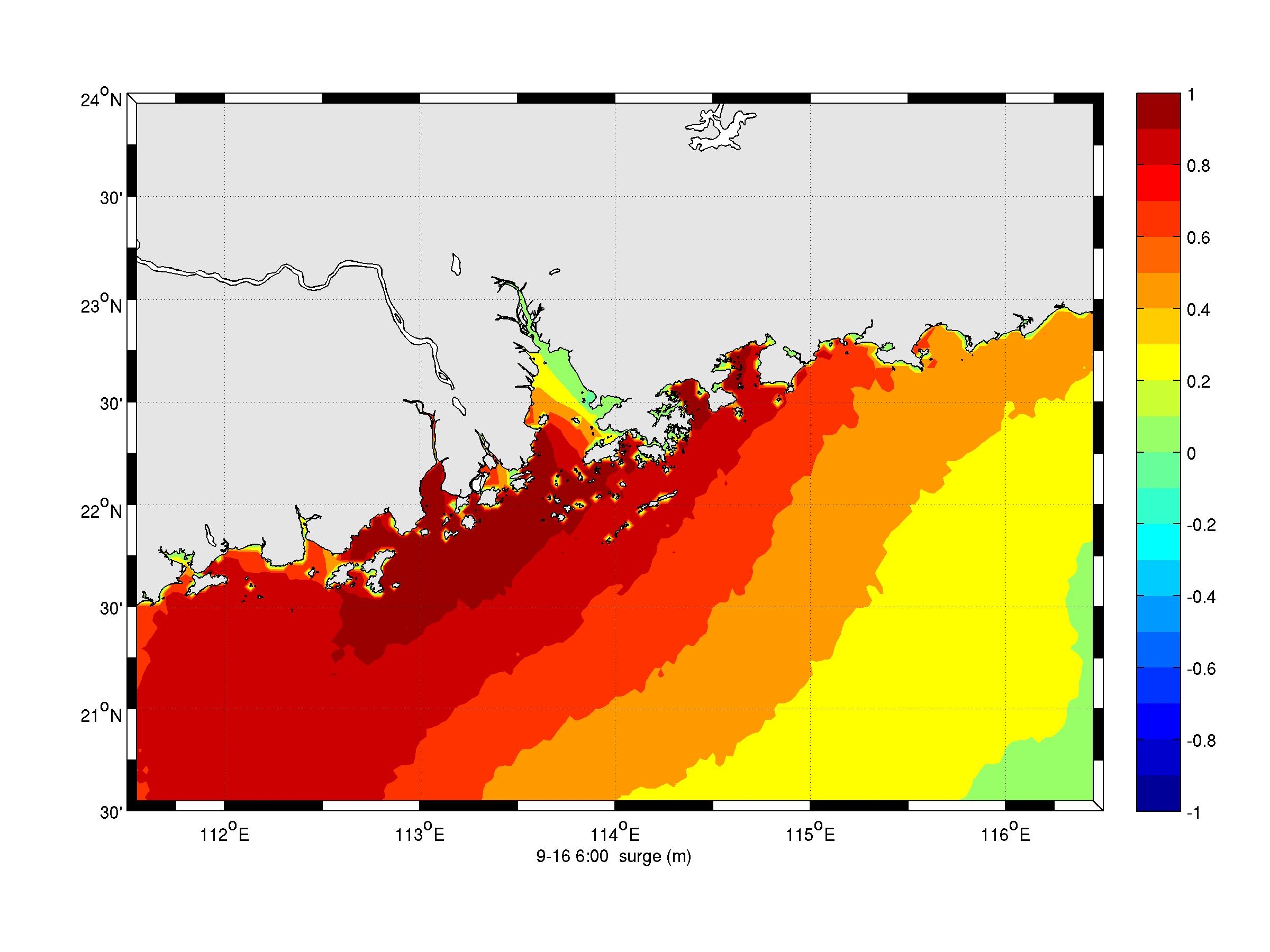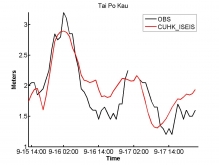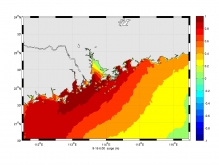CUHK
News Centre
CUHK ISEIS Develops a New Storm Surge Prediction SystemAccurately Predicted Sea Level Rise in Hong Kong Caused by Typhoon Kalmaegi
Supported by the Innovation and Technology Fund, Professor Pan Jiayi of the Institute of Space and Earth Information Science (ISEIS) at The Chinese University of Hong Kong (CUHK) and his research group develop a new storm surge prediction system that can predict marine dynamical environment of Hong Kong coastal sea. The system generated highly precise forecasts on sea level rise of the storm surge when Typhoon Kalmaegi hit the Hong Kong SAR in September. The prediction results were consistent with the observation data of the Hong Kong Observatory.
The forecast accuracy of the storm surge caused by Typhoon Kalmaegi is higher than 80%, better than those of the American Sea, Lake, and Overland Surges from Hurricanes (SLOSH) system and the Japan Meteorological Agency (JMA) system. The storm surge forecast system can predict the absolute sea level rise caused by the typhoon by offsetting the tidal sea level height. The prediction results showed that Typhoon Kalmaegi brought about local sea level rise of as high as one meter on 16 September 2014. According to the Hong Kong Observatory, Typhoon Kalmaegi was approaching Hong Kong from 12 September, and the Hong Kong Observatory issued Tropical Cyclone Warning Signals No.8 at the midnight of 16 September. The maximum wind speed near the center of the typhoon reached 130km / h,
Professor Pan said, ‘The storm surge prediction system can provide forecasts at multiple stations along the Hong Kong coastlines and also monitor the whole Hong Kong coastal sea area, and in addition to storm surge sea level heights, the predicted parameters also include ocean currents, waves, and meteorological data. Precise prediction and analysis of typhoon-affected sea states may facilitate fast responses to storm-induced ocean disasters, and also be of great significance in maintaining a safe condition for the seaway transportation.’
The system presents real-time forecasts of storm surge, tidal currents, and waves in Hong Kong coastal sea. Prediction results are available on the ISEIS website of http://wave.iseis.cuhk.edu.hk/.







